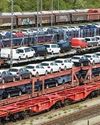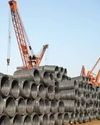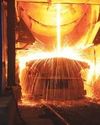It has been an eventful year for the auto sector owing to various factors like poor festive sales, high insurance cost, liquidity crunch and increased fuel prices.

Car sales during 2018-19 never experienced a smooth ride, plagued by huge inventory backlog at the dealerships. It was quite an uphill task to end the year on a high. However, the final sales graph made most producers happy.
The country’s largest passenger car manufacturer, Maruti Suzuki India (MSI) sold 158,076 units in March 2019. This includes 147,613 units in the domestic market and 10,463 units in exports. With this, the company ended 2018-19 with its highest ever total sales of 1,862,449 units a growth of 4.7 percent. This comprised highest ever domestic sales of 1,753,700 units. The export sales were 108,749 units.
Maruti’s mini and compact segment, which comprises of Alto, WagonR, Ignis, Celerio, Swift, Baleno and Dzire, saw a drop in sales in March 2019, as well in the entire fiscal. Compact and mini car sales stood at 99,358 units, down 6.6 percent as against 106,396 units in the year-ago month. Sales during 2018-19 stood at 1,240,854 units, down 5.5 percent, against 1,175,658 units in the previous fiscal.
MSI’s total passenger car segment, which includes the mini, compact and mid-size (Ciaz) segment saw a decline of 6.9 percent in March 2019 at 103,030 units as against 110,717 units. However, during FY19 total sales of passenger cars rose 4.2 percent at 1,287,023 units, against 1,234,571 units.
In the utility vehicle segment, the leading car maker saw rise in sales during March 2019 and FY19. Sales rose by 12.3 percent in March 2019 and 4.1 percent in FY19.
Further, vans like Eco and Omni also saw sales moving north by 201.1 percent in March 2019 and 15.1 percent in FY19. However, the highest growth was seen in the light commercial vehicles (LCV) at 82.9 percent in March 2019 and whopping 138 percent during FY19.
Denne historien er fra April 2019-utgaven av Steel Insights.
Start din 7-dagers gratis prøveperiode på Magzter GOLD for å få tilgang til tusenvis av utvalgte premiumhistorier og 9000+ magasiner og aviser.
Allerede abonnent ? Logg på
Denne historien er fra April 2019-utgaven av Steel Insights.
Start din 7-dagers gratis prøveperiode på Magzter GOLD for å få tilgang til tusenvis av utvalgte premiumhistorier og 9000+ magasiner og aviser.
Allerede abonnent? Logg på

Steel's Net Zero mission
The country’s commitment to achieving Net Zero within a targeted timeframe will now propel its steel sector towards a sustainable future in line with global trends.

Fuel Price Hike, Supply Chain Disruption Hurt Festive Sales
Supply chain disruptions and fuel price hikes have hurt festive sales in a big way as most auto majors posted decline in sales in October.

Seaborne coking coal offers remain range-bound
Seaborne coking coal offers moved in a narrow range in October amid global supply tightness and healthy spot demand.

Global crude steel output down 8% in September
China manufactured 74 mt in September, fall of 21% y-o-y while India’s production went up by 7% to 10 mt.

MOIL embarks on expansion projects
“Even though our country is blessed with manganese ore reserves, we import 50% of the domestic requirement. We have to lower our import dependence and save precious foreign exchange.” Ram Chandra Prasad Singh, Steel Minister

Iron ore handled by major ports down 17% in H1
The 12 major Indian ports handled 27 mt of iron-ore during H1 of 2021, down by 17% from 33 mt recorded for the corresponding period of previous year.

Shrinking China output to boost India exports
“In the third quarter of 2021, the company actively responded to the pressure from external policies, such as production curtailment and dual control system on energy consumption and intensity, as well as coal resource shortage and surging prices.” Baoshan Iron and Steel Co Ltd

Indian Railways' iron-ore handling up 25% in H1
Indian Railways in April-September of 2021 (H1) transported 84 mt of iron ore, up by 25% over 67 mt during April-September 2020.

September crude steel production up 7.2% y-o-y
India’s crude steel production in September 2021 grew 7.2 percent to 9.547 million tons (mt) over September 2020 but was down by 3.2 percent from August 2021 output, provisional steel ministry data showed.

“Five enablers: way forward to sustainable cleaner steel”
Right and scalable technology, appropriate policy guidance by government, access to finance to fund transition, willingness of customers to pay for cleaner products and infrastructure for use of new technologies are the need of the hour for the sustainable and cleaner steel industry, according to Madhulika Sharma, Chief Corporate Sustainability, Tata Steel.